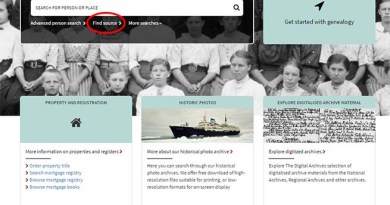
A quick look at the Norwegian 1664-1666 census
The 1664-1666 census is one of the earliest sources that are easily available to us through The Norwegian Digital archives (Digitalarkivet). It is only available in a scanned version and here is a few hints on how to get started with this census.
The census can be accessed here
To start with I should say that the census is in Gothic handwriting and is hard to read. You might want to have a look at my quest into Gothic handwriting that I shared in 5 articles beginning here. This is not the source to start your search for ancestors in Norway, but as some have delved into it, I can make a few comments. I readily admit that I struggle to read this census, but we can have a look at it together.
First of all, as you can see from the page in Digitalarkivet (also linked above) you need to know where to look for your ancestors.
The census mainly contains the male population. Only on a few occasions there is a woman listed. This is where she is a widow and is the person that has the ownership or holds the lease to the farm. She is then often just listed as “enchen” meaning the widow.
As I wrote in my article Norwegian censuses, the county Finnmark and the towns are not listed in this census.
The material is organised a little differently from parish to parish and there is a lot that could be written about this census. I will only share a few general observations that might help if you want to study at this source.
The farms are listed according to tax category. I am just listing the categories and I might discuss these in a later article. For pure genealogical purposes it does not matter what tax category the farm is in. I list these to make sure you search all the categories in the parish.

Fulde gaarde

Halffne gaarde

Øde gaarde
The different people are normally listed with name and age. Patronym is not always listed.
Here are a few examples of the headings:
| Gaarder = Farms | Opsidere = those who run the farm | Sønner = Sons | Drenge = Farmhands | Husmend = Cotters | Husmends sønner = Cotter’s sons |
In the example above the cotter’s sons are also listed
The word “opsiddere” (modern: “oppsittere”) refer to the person who is in charge of running the farm.
In the example below the cotter’s sons are not listed

| Gaarder = Farms | Opsiddere = those who run the farm | Sønner = Sons | Tienestedrenger= Farmshands | Husmend oc Strandsittere = cotters |
“Strandsittere” are sometimes used about Cotters that live by the sea-/lakefront.
In this example the farmhands are not listed:
| Gaarde = Farms | Opsiddere = Residents | Sønner = sons | Huusmend = Cotters | deris Sønner = their (the cotter’s) sons |
In addition there are sometimes listed “Knegter”. This can either be a ung servant or a soldier.

Here is one of my ancestors living at Øfferste Frostad farm in Vestnes parish.

This is Halda Knudsøn 80 years (aar) old and in the next column his son Rasmus Haldason 11 1/2 years old.
Sometimes you will find the farms tax rate listed below the farmname.
This was a few comments about the Census 1664-1666. Hopefully it can make it a little easier if you choose to study this source. I might at a later stage write a little bit about the taxation system as it is part of the study of how our ancestors lived helps us understand how their lives was.






I have featured your blog in my “Follow Friday” blog post today (http://so-many-ancestors.blogspot.com/2016/04/follow-friday-norwegian-genealogy-and.html) and have highlighted this post as an example of what you write about. Thank you for the information; it is very helpful to me because my mother’s father was half Norwegian and my father’s mother was 1/4 Norwegian.
Very good post! We are linking to this great post on our site.
Keep up the good writing.